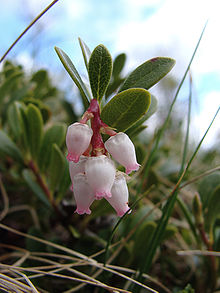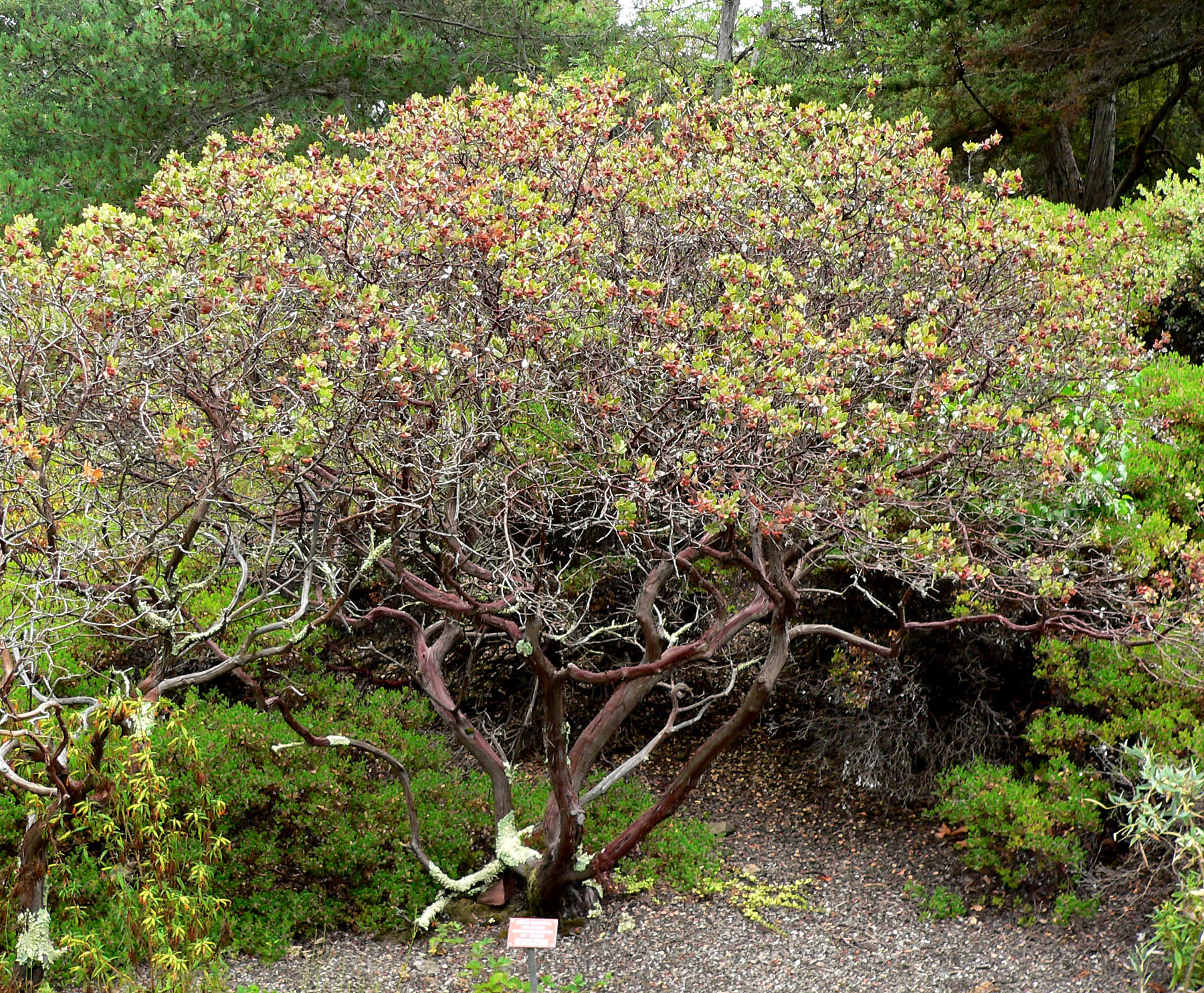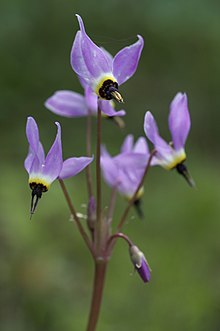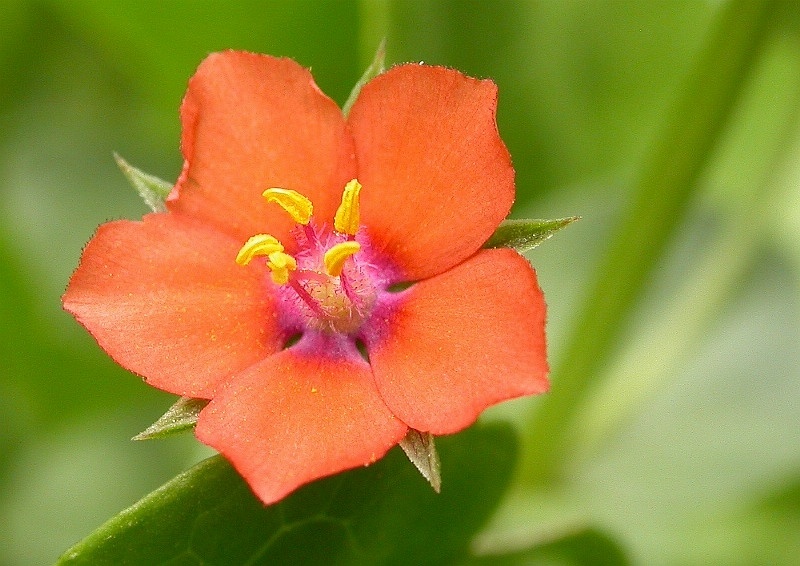Family: Heath
Characteristics
Small, woody groundcover shrub 5-30 cm high. Evergreen leaves that are shiny, small, and feel thick, leathery and stiff. Alternately arranged on the stems. Undersides of leaves are lighter green than on the tops. New stems can be red if plant is in full sun, but green in shadier areas. Older stems are brown. White or pink flowers bloom in the spring.
The finely textured velvety branches are initially white to pale green, becoming smooth and red-brown with maturity.
The dark green leaves are 1 in long and have rounded tips tapering back to the base. In fall, the leaves begin changing from a dark green to a reddish-green to purple.
Terminal clusters of small urn-shaped flowers bloom from May to June. They bear round, fleshy or mealy, bright red to pink fruits called drupes. The smooth, glossy-skinned fruit will frange from 1/4 to 1/2 in in diameter.
Area
Chaparral. Cool places.
Other
Used medicinally for its antimicrobial properties and acts as a mild diuretic. It has been used for urinary tract complaints. An infusion may be made by soaking the leaves in ethanol and then diluting with water.
Used in many traditional North American Native smoking mixes known collectively as kinnikinnick.
Family: Heath
Characteristics
They are shrubs or small trees. There are about 60 species of Arctostaphylos, ranging from ground-hugging arctic, coastal, and mountain species to small trees up to 20 ft tall. Most are evergreen, with small oval leaves 1-7 cm long, arranged spirally on the stems. The flowers are bell-shaped, white or pale pink, and borne in small clusters of 2-20 together. They flower in the spring. The fruit are small berries, ripening in the summer or autumn. The berries of some species are edible.
Area
Chaparral
Family: Leadwort
Characteristics
Tough perennial growing from a woody rhizome. The thick, leathery leaves are oval in shape and up to about 30 cm long, including the petioles, located in a basal rosette about the stem (about 1 ft long). The inflorescence is a stiff, branching panicle bearing large clusters of flowers. The flowers have brownish white ribbed sepals and lavender to nearly white petals. Blooms in summer.
Area
 Coastal habitat: beaches, salt marshes. Grows with pickleweed and salt grass.
Coastal habitat: beaches, salt marshes. Grows with pickleweed and salt grass.
Family: Leadwort
Characteristics
Perennial which grows in low clumps and sends up long stems from which globes of bright pink flowers blossom. In some cases purple, white, or red flowers also occur. Basal mound of tough grass-like leaves. Blooms from late spring through summer.
Area
Coastal bluffs, dunes, beaches, edges of salt marshes.
Family: Primrose
Characteristics
A summer deciduous with basal leaves and nodding flowers on stems 10-30 cm tall. The flowers are magenta to deep lavender to white, with the stamens thrust out and the sepals bent back.
Area
Needs good drainage and dry summer period to grow. Moist grassy places in brush or open woods.
Other
One of the first flowers to bloom. Late January to February. Roots and leaves edible when roasted or boiled. Poisonous if consumed raw.
Family: Primrose
Characteristics
A low-growing annual with orange/red flowers with a purple center. Flowers bloom only when the sun shines. Oval leaves grow in opposite pairs.
Area
Light soils.
Family: Four o'clock
Characteristics
Perennial with fragrant yellow flowers in bloom except in the coldest months. Flowers have no petals. Sticky foliage usually sprinkled with sand. Bears a small, winged fruit. Grows in succulent mats.
Area
Sandy beaches.
Other
Edible roots.







%20(2).jpg)



